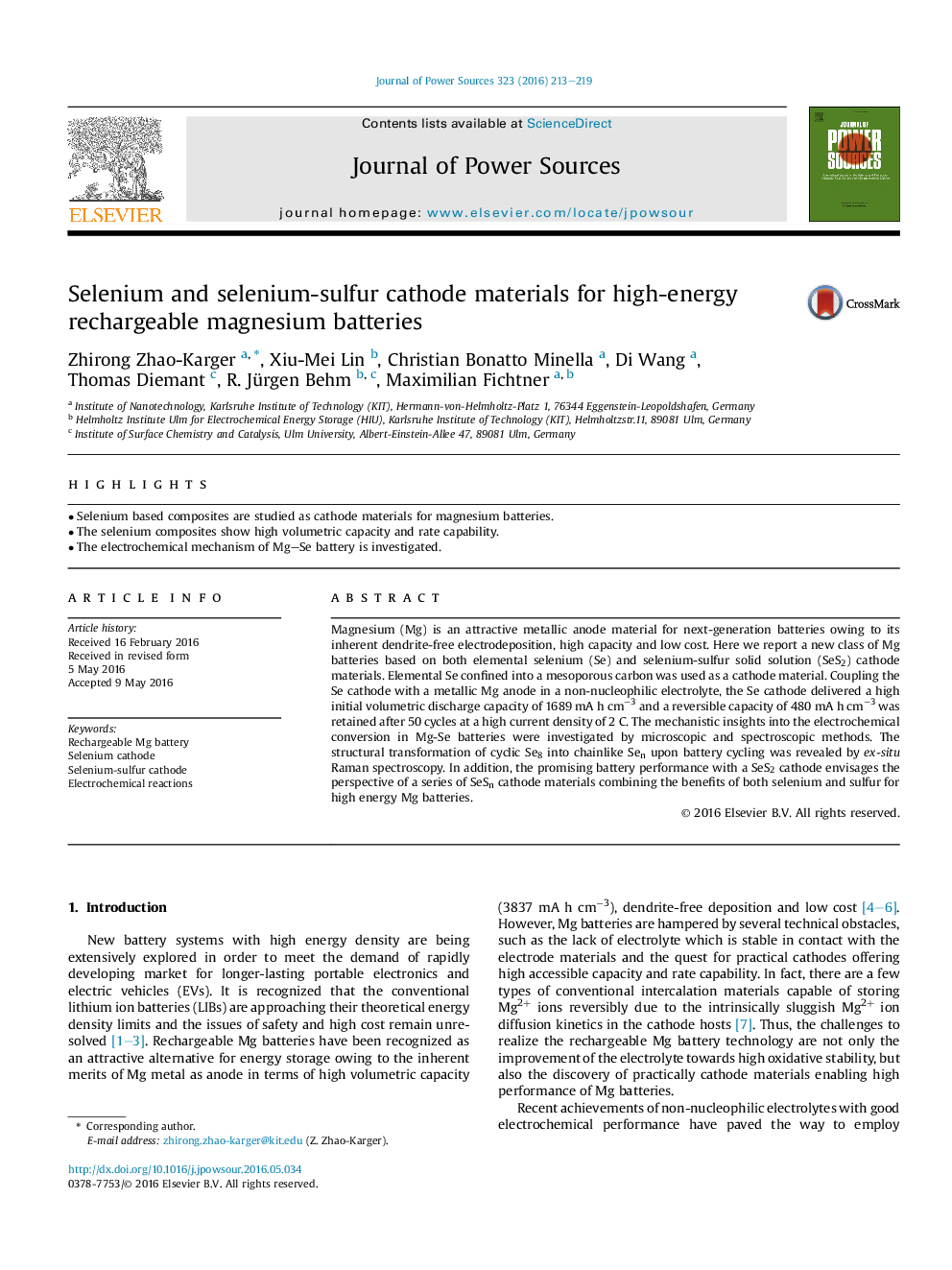| Article ID | Journal | Published Year | Pages | File Type |
|---|---|---|---|---|
| 7727991 | Journal of Power Sources | 2016 | 7 Pages |
Abstract
Magnesium (Mg) is an attractive metallic anode material for next-generation batteries owing to its inherent dendrite-free electrodeposition, high capacity and low cost. Here we report a new class of Mg batteries based on both elemental selenium (Se) and selenium-sulfur solid solution (SeS2) cathode materials. Elemental Se confined into a mesoporous carbon was used as a cathode material. Coupling the Se cathode with a metallic Mg anode in a non-nucleophilic electrolyte, the Se cathode delivered a high initial volumetric discharge capacity of 1689 mA h cmâ3 and a reversible capacity of 480 mA h cmâ3 was retained after 50 cycles at a high current density of 2 C. The mechanistic insights into the electrochemical conversion in Mg-Se batteries were investigated by microscopic and spectroscopic methods. The structural transformation of cyclic Se8 into chainlike Sen upon battery cycling was revealed by ex-situ Raman spectroscopy. In addition, the promising battery performance with a SeS2 cathode envisages the perspective of a series of SeSn cathode materials combining the benefits of both selenium and sulfur for high energy Mg batteries.
Keywords
Related Topics
Physical Sciences and Engineering
Chemistry
Electrochemistry
Authors
Zhirong Zhao-Karger, Xiu-Mei Lin, Christian Bonatto Minella, Di Wang, Thomas Diemant, R. Jürgen Behm, Maximilian Fichtner,
